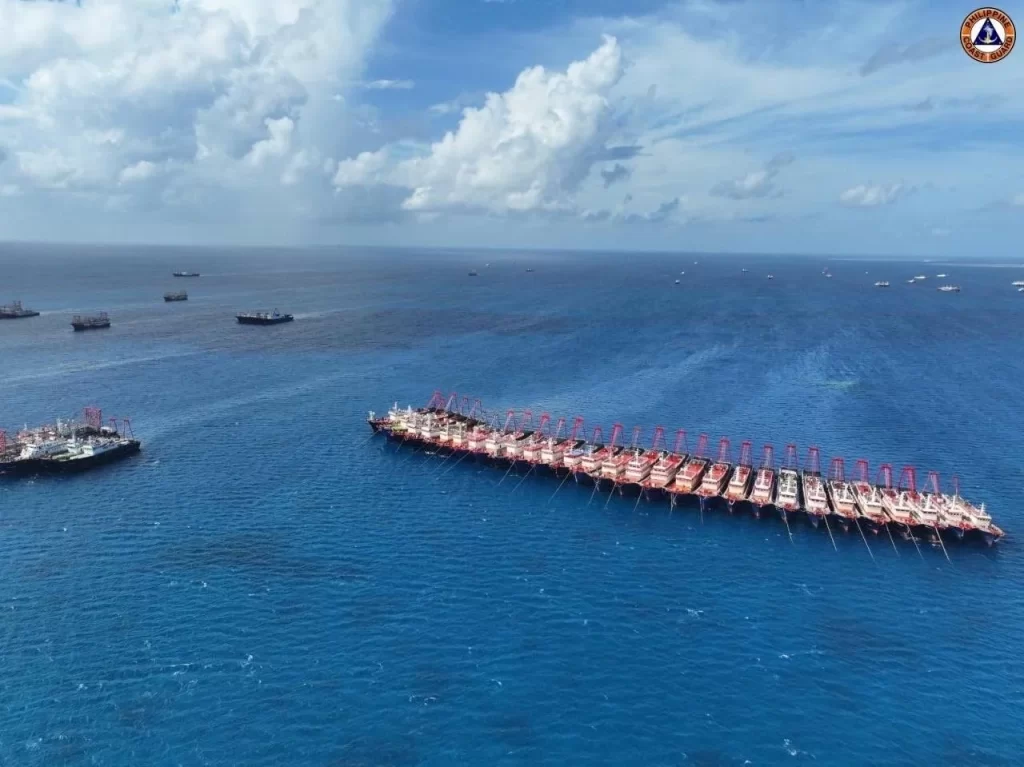The South China Sea, a marginal sea that is part of the Pacific Ocean, has emerged as a hotbed of geopolitical tension in recent years. At the heart of this tension lies the complex and often contentious relationship between the Philippines and China. This article aims to explore the historical context, current developments, and future implications of this crucial international issue.
Historical Context
- Early History and Claims: The South China Sea has been a critical maritime region for centuries, with its rich fishing grounds and strategic trade routes. Both the Philippines and China have historical claims to parts of this sea, rooted in centuries-old maps and documents.
- Post-World War II Developments: The geopolitical landscape of the South China Sea changed dramatically after World War II, with newly independent nations, including the Philippines, asserting their territorial claims. China’s assertion of its ‘Nine-Dash Line’ further complicated matters.
The Heart of the Dispute
- Territorial Claims: The core of the dispute lies in the overlapping territorial claims over various islands, reefs, and waters in the South China Sea. The Spratly Islands and Scarborough Shoal are particularly contentious areas.
- Economic and Strategic Significance: The South China Sea is not only rich in natural resources, including fish and potential oil and gas reserves, but it is also one of the world’s busiest maritime trade routes. Control over these waters means significant economic and strategic advantages.
International Law and the UNCLOS
- The Role of UNCLOS: The United Nations Convention on the Law of the Sea (UNCLOS) plays a crucial role in this dispute. The Philippines and China are both signatories to UNCLOS, which sets out the legal framework for maritime territorial claims.
- The 2016 Arbitration Case: A landmark moment in the dispute was the 2016 arbitration case brought by the Philippines against China. The tribunal’s ruling, which favored the Philippines, rejected China’s ‘Nine-Dash Line’ claims. However, China refused to acknowledge the ruling.
Recent Developments and Current Status
- Military Buildup: Recent years have seen a significant military buildup in the region, particularly by China, which has constructed artificial islands and military installations in disputed areas.
- Diplomatic Efforts and Tensions: Both countries have engaged in diplomatic efforts to manage the dispute, but tensions remain high, with frequent incidents and standoffs in the contested waters.
Future Implications and Possible Resolutions
- Regional Stability: The resolution of this dispute is crucial for regional stability in Southeast Asia. The involvement of other nations, including the United States, adds to the complexity.
- Prospects for Peaceful Resolution: The article will explore the potential pathways to a peaceful resolution, including diplomatic negotiations, international mediation, and confidence-building measures.
Conclusion The South China Sea dispute, particularly between the Philippines and China, is a multifaceted issue with deep historical roots and significant global implications. Finding a resolution that respects international law, ensures regional stability, and addresses the concerns of all stakeholders remains a critical challenge for the international community.








